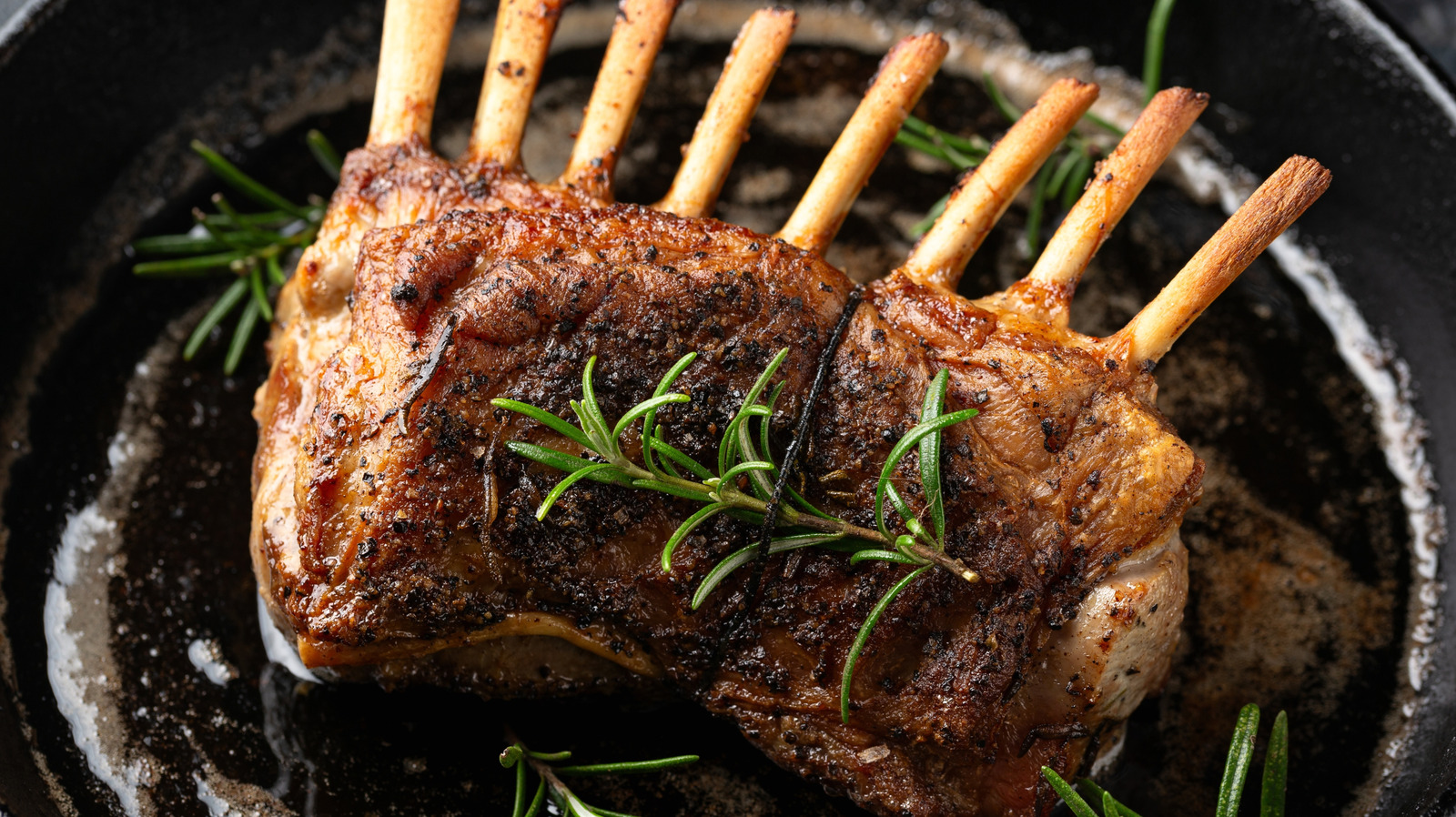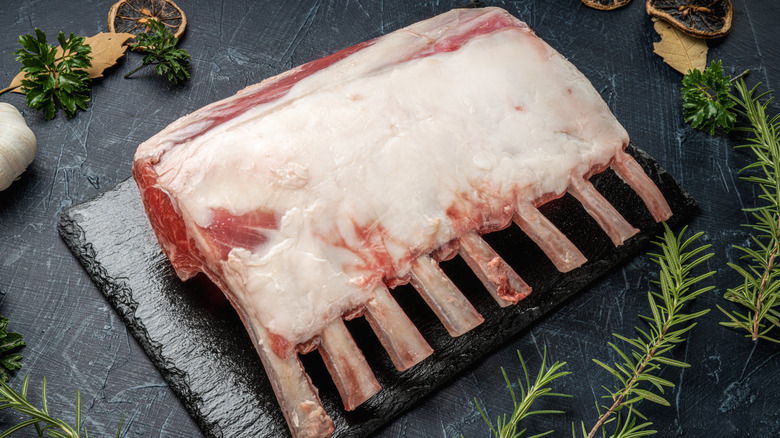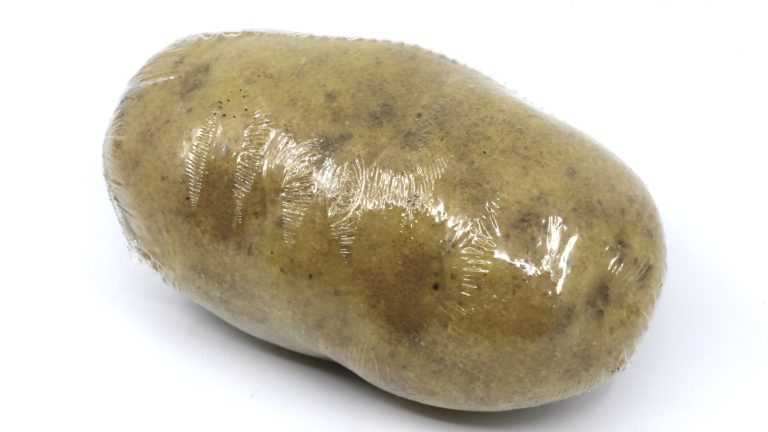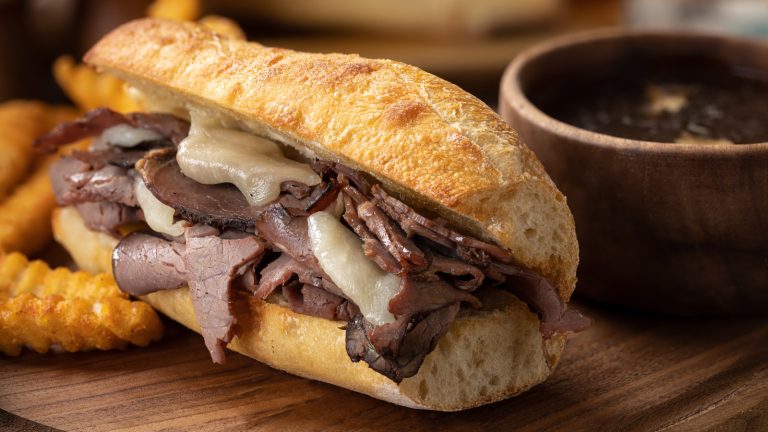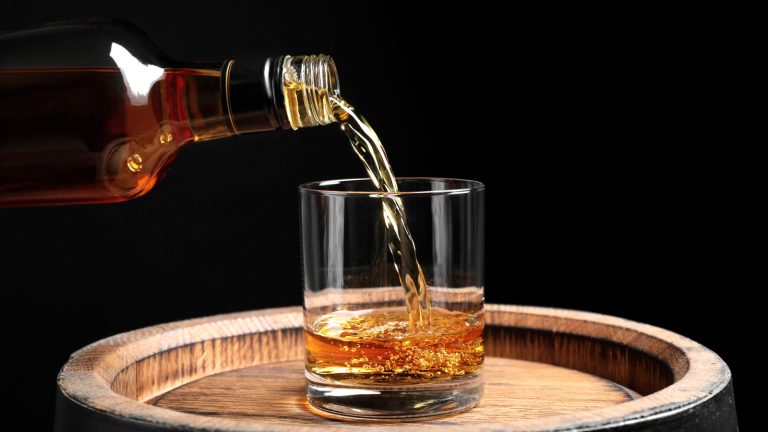If you’re in need of a show stopper for your next dinner party, don’t sleep on a rack of lamb. It’s a dish that seems a lot more fancy than the time it takes to prepare, it looks amazing when it’s sliced and served, and it only takes around 25 to 30 minutes to roast each rack to medium-rare. Plus, you can often find a deal on lamb at Costco. There is, however, the matter of removing the thick, excess fat that comes attached to each rack. If you’re wondering if you should or shouldn’t remove it, the answer really depends on how you plan to cook the meat and what you want the finished dish to look like.
Racks that are destined for roasting or grilling don’t really need all of the fat to be trimmed, because it actually serves a few functions, and some of it will render away during the cooking process. If you’re planning to cook the meat with a sous vide machine, however, it’s not a bad idea to get rid of most of the fat. Many chefs compromise on lamb fat, regardless of how it’s cooked, by leaving some of it attached to the meat while removing the stuff sticking to the bones, which is called frenching. It really all comes down to your preference, and how much prep you want to do.
Lamb is lean, so some fat is okay
Whole lamb racks usually come vacuum-sealed in a plastic package with the extra fat still attached. The only time it’s not sold this way is when you buy lamb racks from a meat counter where the butchers have already done the work to make them look nice. Even when the racks are cleaned up by the professionals, however, you’ll notice that they still leave about a ¼ of an inch of fat. This is so that the lean meat has a cushion against the high heat of a grill or roasting oven, and it will be easier to cook the food to temperature without going overboard. As the meat cooks, a lot of that excess fat will render and drip away. Also, a lot of people simply like the cooked lamb fat, which gets hard on the outside, and it’s the perfect vehicle for a standout lamb with a crisp, flavorful crust.
It’s a different story for sous vide, however, where the meat is vacuum-sealed in a plastic bag. Since there’s no place for the fat to escape, the finished lamb will have a lot of rubbery, white fat attached, which doesn’t look as appetizing as roasted or grilled fat. So if you’re planning to sous vide, it’s okay to trim the fat right down to the meat. If you’re worried about losing tenderness from trimming, try soaking the meat in milk first (after all, milk may be the key to tender lamb chops), which will make the chops sumptuously soft and you won’t even miss the fat.


